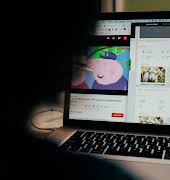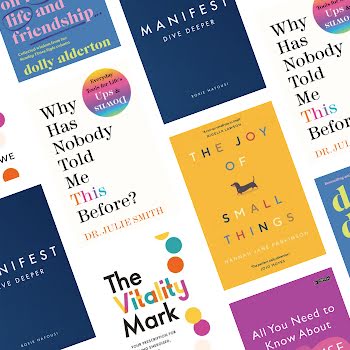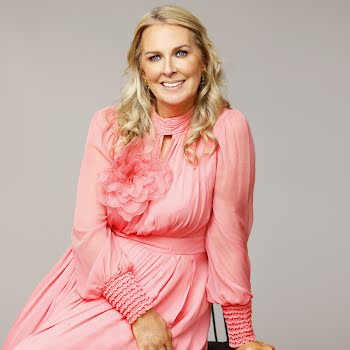
By Jennifer McShane
11th Sep 2020
11th Sep 2020
When Jennifer McShane decided to take a year out to freelance, she quickly realised her perceptions of what she was about to undertake were a little skewed…
The first thing I decided to do when I went freelance was to buy very fancy stationary. I would need it, I reassured myself, for all the crossing of lists, for all the note-taking and all the post-its that I’d never seen a real use for before, which would definitely be essential now. I must have spent almost €40 on all that. And I’d hardly emailed one editor asking them to please like — and pay for — my ideas and subsequent writing.
I didn’t keep the receipt, but every time I think back I feel my cheeks burn.
Several months after I took the jump, I realise the fancy stationary delusion was a byproduct of the Instagram-embroiled culture I’ve grown up in. Lie-ins, no commuting, elegantly sipping flat-whites and working in hip cafes while the ideas flow freely (only this time around, literally, unless they are commissioned) — that was my perception of the life of a freelancer.
It was a naive one.
Time spent having a lie-in is outweighed by the guilt you feel not being more productive; the coffee often goes cold before I have a chance to sip it and my laptop broke (thank you, universe) so I’ve never written a word in a hip cafe — I work from our den where my computer is too big to take on the go.

Before I go on, don’t get me wrong: I’m proud I did — and am currently still doing it. There are quite a few upsides to deciding to go your own way and the main one is that you have done it. For a few months, or a year or more, you have left the security of a steady income, paid holidays and office banter and forged your own path. It’s a huge achievement and it gives you a confidence boost like nothing else.
The hustle itself? I’m categorically bad at it. But it’s made my imposter syndrome take a backseat. Because I’m trying, learning and I haven’t been late on a bill since I started. Freelance, for all its challenges, teaches you that you can survive.
But there are a few more things I wish had really been pressed upon me before I made the leap and others are the reason I’m glad I did:
It is HARD work
Really hard. You spend all of your time thinking (or, in my case, panicking about) your ideas before finally getting the nerve to send them before an anxious wait for a reply begins. I’m constantly reading, thinking, wondering how I might write more stories that are meaningful and will offer editors and readers more — it is a test of your creativity, which is good, but it can also be very draining. You have to think of taxes, invoicing, pitching, client meetings, reaching out to PRs, emails and press events (none of which singularly generates an income — it’s all of it together) and still factor in time to actually do the work on time and to deadline.
You must have a plan
Because, in my experience, it will take you at least two months to get paid for your work from the starting point and at least six months to get regular gigs. Have a plan; know the contacts you’ll reach out to and ideally, start doing this well before you leave your current position.
Also, if you can, a buffer fund to tide you over while you await some inevitably late payments is key, just so you’re not panicking or stuck for paying bills — and remember, you aren’t paid for any sick days or holidays you take. When you factor in rates, don’t forget to include things like a percentage for tax and to take 20 per cent out of what you earn for your tax filing each year.
You alone are responsible for your income
Yes, it’s totally obvious, but the concept of the-more-you-work-the-more-you-make I didn’t really grasp until I was in it. You have a lot of power in one way, you get to pick and choose, but it’s on you to ensure you find the work and ensure you will get paid for it. It means a mix and match of projects from the work you love to those that pay the bills.

But, you can work it to suit you
That flexi-time doesn’t happen as often as you might think (I’m looking at you, Carrie Bradshaw) but it is your time. Spend the days with your kids and work at night, decide not to work on Mondays or Fridays. Stay up late, you don’t have to commute! But make sure to see people — freelancing will be lonely otherwise. Take a long lunch and buy yourself something nice when you have the first month’s income in. You’ve taken the leap — the hardest bit. Enjoy it, you’re doing it and it isn’t easy so give yourself some credit.
A little advice will go a long way
My advice? Pitch everywhere and pitch often. Don’t be afraid of ‘no,’ try again. Know the companies (and the audience) you’re pitching to, send personalised emails (and to the right person), be persistent but not overly so. Know your rates, ask around, talk to other freelancers and don’t be afraid to turn down a job if it’s too time-consuming for a low rate. For the first month or two, say yes to everything. You can be picky when you know income is a bit more stable.
Be kind, helpful, but don’t go for too many coffees and meetings — they are a huge time suck. Go big, you’re out to try, so try for those dream companies — you’ve nothing to lose. Use your time, take a day off, have at least two projects that genuinely spark joy and remember, if you decide it’s not for you after a year, at least you’ve tried.
Photographs: Pexels























